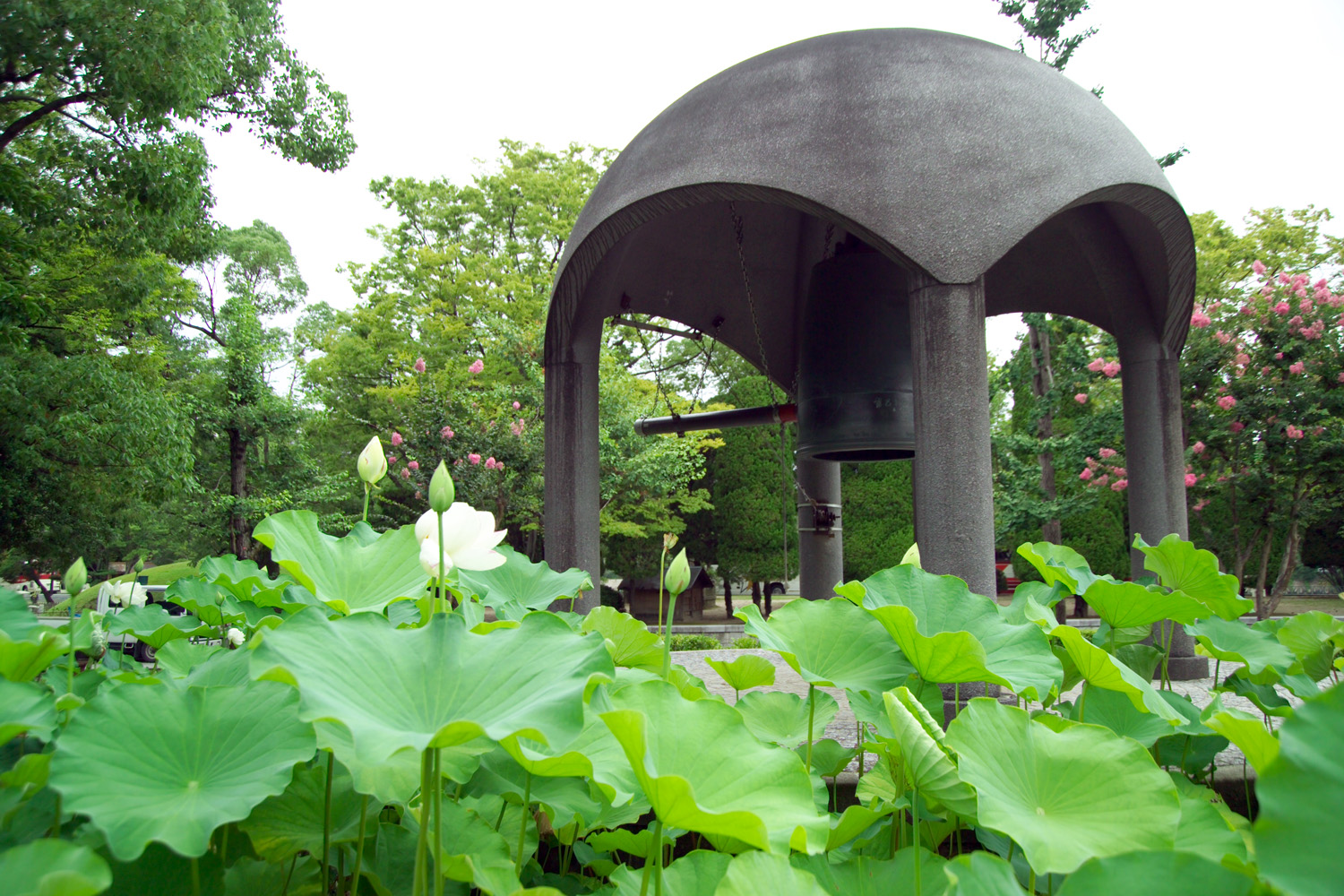On May 1, 2015, the Atomic Heritage Foundation (AHF) will meet with the Mayors of Hiroshima and Nagasaki to discuss the interpretation of the Manhattan Project, the top-secret effort in World War II to create an atomic bomb, and its legacy for the world today. The meeting will take place at 10 AM at the Institute of International Education (IIE), 809 United Nations Plaza, New York, NY. Members of the press are invited to attend the portion of the session beginning at 10:40 AM.
Kazumi Matsui, Mayor of Hiroshima, and Tomihisa Taue, Mayor of Nagasaki, invited AHF to meet with them while they are attending the 2015 Review Conference of the Parties to the Treaty on the Non-Proliferation of Nuclear Weapons. The invitation came in response to an article in Nishinippon Shinbun in December 2014 that quoted Cynthia C. Kelly, President of the Atomic Heritage Foundation, as saying: “I would like to invite the mayors of Hiroshima and Nagasaki to the United States in order to listen to their opinions, so that we may consider all points of view.” Members of the Hiroshima Peace Culture Foundation, the Japan Confederation of A- and H- bomb Sufferers Organization, and Hiroshima and Nagasaki city staff will also attend the meeting.
On December 12, 2014, Congress passed the Manhattan Project National Historical Park Act that creates a Manhattan Project park with units at Los Alamos, NM, Hanford, WA, and Oak Ridge, TN. Mayors Matsui and Taue sent letters to US Ambassador to Japan Caroline Kennedy expressing their concern that the Manhattan Project National Historical Park would “glorify” the atomic bomb and the devastation of their cities at the end of World War II.
Ambassador Kennedy responded in a letter sent to the Mayors in January 2015: “Our shared history is important to both of our nations, and we care deeply that we treat it with respect and honesty. I will share your concerns with the National Park Service.”
In a video produced by the National Park Service (NPS) and Department of Energy on the new park, NPS Director Jon Jarvis explains, “We looked at the sites of Hanford, Oak Ridge, and Los Alamos as the place that we can tell the American story about the development and use of the atomic bomb.”
The National Park Service serves as America’s storyteller and already interprets many contentious chapters in America’s history such as the Civil War and the Civil Rights movement. The national park system has over 400 different sites and commemorates the full range of American history, including events that people view very critically or condemn as “wrong” or immoral.
Gettysburg and Antietam battlefields and the Selma to Montgomery, AL National Historic Trail represent aspects of America’s violent and troubled past. At these sites, the National Park Service presents multiple perspectives on what happened and invites people to examine the decisions and events of the past in the context of the time. Rather than presenting an authoritative “museum voice,” the National Park Service engages visitors through first-hand accounts and presents more open-ended interpretations to prompt reflection by visitors.
Clarence Moriwaki, the President of the Bainbridge Island Japanese American Exclusion Memorial Association and the grandson of a victim of the bombing of Hiroshima, published a powerful op-ed in The Seattle Times in December 2012 urging that Congress establish the Manhattan Project National Historical Park. “Some believe a Manhattan Project National Historic Park would glorify nuclear warfare. As someone who lost family because of the atomic bomb, I agree that there is no glory in the first and only use of atomic weapons.
“However, the Manhattan Project is an important chapter of American history, and I believe we should recount all parts of our heritage, even the painful moments…The Park Service has done an extraordinary job to share the sad American chapter of Japanese American incarceration. If authorized by Congress, I believe it would do the same to tell the complex history of the Manhattan Project that created the world’s first two atomic bombs.”
The Atomic Heritage Foundation led efforts to establish the park for over a decade. Now AHF is working on the interpretation of the park and welcomes a dialogue with the Japanese to consider this world-changing history from both an American and an international perspective. The meeting with the Mayors is a first step in the process.
Members of the press who would like to attend should submit their name and position to Jessica Graham of IIE at JGraham@iie.org by noon, April 30.





